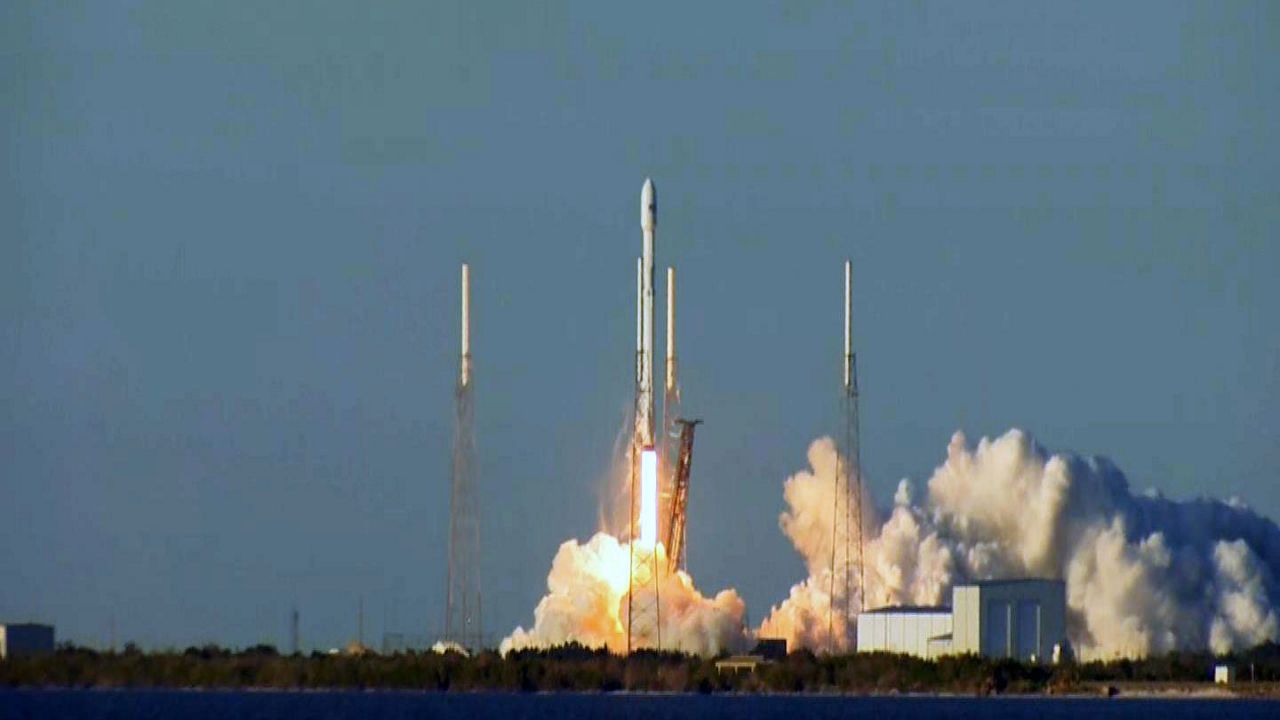CAPE CANAVERAL AIR FORCE STATION, Fla. — SpaceX sent a NASA probe into space Wednesday evening that will search for alien worlds.
- Falcon 9 blasted off at 6:51 p.m. Wednesday
- NASA TESS probe will look for planets outside solar system
- Company lands booster on drone ship
- SEE BELOW: Live chat replay ▼
The Falcon 9 rocket lifted off from Space Launch Complex 40 at Cape Canaveral Air Force Station at 6:51 p.m.
SpaceX postponed the launch Monday night to go over the Falcon 9's navigational systems.
The 200-foot-tall rocket is carrying the NASA TESS spacecraft, which stands for Transiting Exoplanet Survey Satellite. The probe will hunt and scan for planets outside of our solar system that could support life as humans know it.
During TESS' two-year mission, four cameras will study and catalog 200,000 planet candidates. TESS will survey an area bigger than the NASA Kepler probe, which launched in 2009, and find planets that are close enough to check out with Earth-based telescopes.
"By doing a survey of nearly the entire sky, it's really finding great targets," said Stephen Rinehart, NASA TESS Project Scientist at the Goodard Spaceflight Center. "Something we haven't been able to do before."
After the launch attempt, SpaceX landed the first-stage booster on its drone ship hundreds of miles out in the Atlantic Ocean, about 10 minutes after launch. The booster was new and had not flown before.
In addition, SpaceX for the first time will try to recover its payload fairing — which is the big nose cone on the Falcon 9. SpaceX is hoping to use parachutes to help guide the nose cone to a soft landing on the ocean surface after launch.
The next scheduled liftoff is another SpaceX Falcon 9, launching on May 4.



